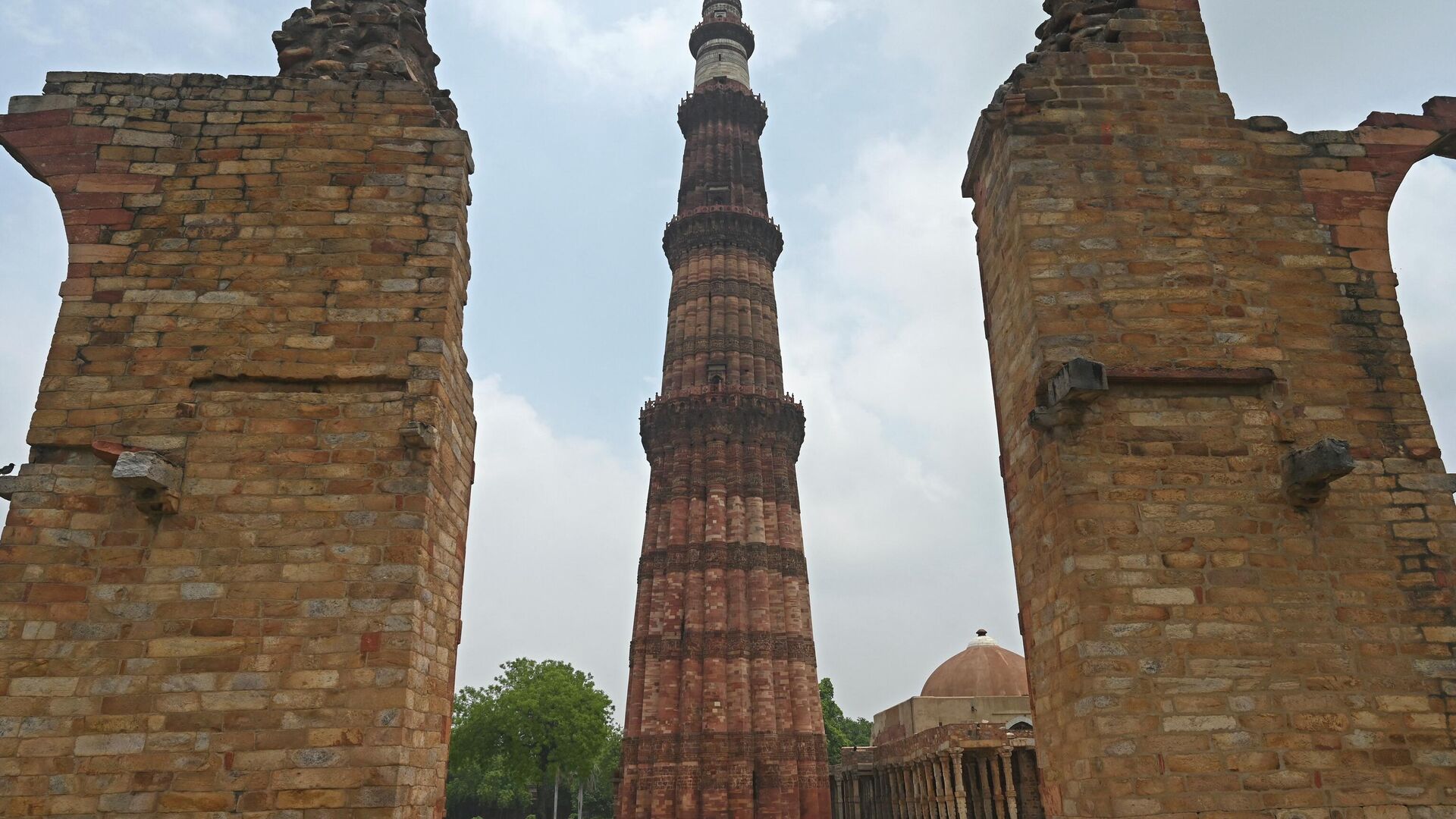https://sputnikglobe.com/20220410/hindu-group-demands-rebuilding-of-ancient-temples-at-unesco-world-heritage-site-qutub-minar-1094634418.html
Hindu Group Demands Rebuilding of Ancient Temples at UNESCO World Heritage Site Qutub Minar
Hindu Group Demands Rebuilding of Ancient Temples at UNESCO World Heritage Site Qutub Minar
Sputnik International
Qutub Minar, a historic site located on the outskirt of Delhi, is the world's tallest brick minaret. The 72.5-metre-high Qutub Minar was founded in 1193... 10.04.2022, Sputnik International
2022-04-10T09:59+0000
2022-04-10T09:59+0000
2022-07-19T10:43+0000
delhi
new delhi
unesco
unesco world heritage site
bharatiya janata party (bjp)
https://cdn1.img.sputnikglobe.com/img/07e6/04/0a/1094637723_0:160:3073:1888_1920x0_80_0_0_21ef6a7cbe5c7572a719ec958cec4515.jpg
A Hindu group, Vishva Hindu Parishad (VHP), demanded the reconstruction of the ancient temples at Qutub Minar. They also demanded the resumption of Hindu rituals and prayers there. The monument was designated as a World Heritage Site by UNESCO in 1993.Last week, a group of VHP workers, including its spokesperson Vinod Bansal, visited the site's complex and claimed that the 27 temples were demolished while Muslim ruler constructed the Qutub Minar."All temples should be rebuilt and Hindus should be allowed to offer prayers there," Bansal said.Qutub Minar was named after the religious figure Sufi Saint Khwaja Qutbuddin Bakhtiar Kaki; its construction was started by Qutb-ud-din Aibak, who later became the first Muslim ruler of Delhi of the Mamluk dynasty and it was partially completed by his successor Iltutmish in 1215, with the two upper tiers being built at later dates.Last month, the National Museums Authority (NMA) asked the Archaeological Survey of India (ASI) to retrieve two Hindu deities, Ganesha idols, in the Qutub Minar complex.NMA chairman and BJP politician Tarun Vijay had on Thursday said that Ganesha idols were placed "disrespectfully" in the Qutub Minar complex.However, so far, ASI has not commented on the matter.
delhi
new delhi
Sputnik International
feedback@sputniknews.com
+74956456601
MIA „Rossiya Segodnya“
2022
Deexa Khanduri
https://cdn1.img.sputnikglobe.com/img/07e4/0c/1e/1081607388_0:0:961:960_100x100_80_0_0_e9e931b8c1e18fb41f3074e2145d7a3a.jpg
Deexa Khanduri
https://cdn1.img.sputnikglobe.com/img/07e4/0c/1e/1081607388_0:0:961:960_100x100_80_0_0_e9e931b8c1e18fb41f3074e2145d7a3a.jpg
News
en_EN
Sputnik International
feedback@sputniknews.com
+74956456601
MIA „Rossiya Segodnya“
Sputnik International
feedback@sputniknews.com
+74956456601
MIA „Rossiya Segodnya“
Deexa Khanduri
https://cdn1.img.sputnikglobe.com/img/07e4/0c/1e/1081607388_0:0:961:960_100x100_80_0_0_e9e931b8c1e18fb41f3074e2145d7a3a.jpg
delhi, new delhi, unesco, unesco world heritage site, bharatiya janata party (bjp)
delhi, new delhi, unesco, unesco world heritage site, bharatiya janata party (bjp)
Hindu Group Demands Rebuilding of Ancient Temples at UNESCO World Heritage Site Qutub Minar
09:59 GMT 10.04.2022 (Updated: 10:43 GMT 19.07.2022) Deexa Khanduri
Sputnik correspondent
Qutub Minar, a historic site located on the outskirt of Delhi, is the world's tallest brick minaret. The 72.5-metre-high Qutub Minar was founded in 1193, immediately after the defeat of Delhi's last Hindu kingdom.
A Hindu group, Vishva Hindu Parishad (VHP), demanded the reconstruction of the ancient temples at Qutub Minar. They also demanded the resumption of
Hindu rituals and prayers there.
The monument was designated as a World Heritage Site by UNESCO in 1993.
Last week, a group of VHP workers, including its spokesperson Vinod Bansal, visited the site's complex and claimed that the 27 temples were demolished while Muslim ruler constructed the Qutub Minar.
"All temples should be rebuilt and Hindus should be allowed to offer prayers there," Bansal said.
Qutub Minar was named after the religious figure Sufi Saint Khwaja Qutbuddin Bakhtiar Kaki; its construction was started by Qutb-ud-din Aibak, who later became the first Muslim ruler of Delhi of the Mamluk dynasty and it was partially completed by his successor Iltutmish in 1215, with the two upper tiers being built at later dates.
Last month, the National Museums Authority (NMA) asked the Archaeological Survey of India (ASI) to retrieve two Hindu deities,
Ganesha idols, in the Qutub Minar complex.
NMA chairman and BJP politician Tarun Vijay had on Thursday said that Ganesha idols were placed "disrespectfully" in the
Qutub Minar complex.
However, so far, ASI has not commented on the matter.


